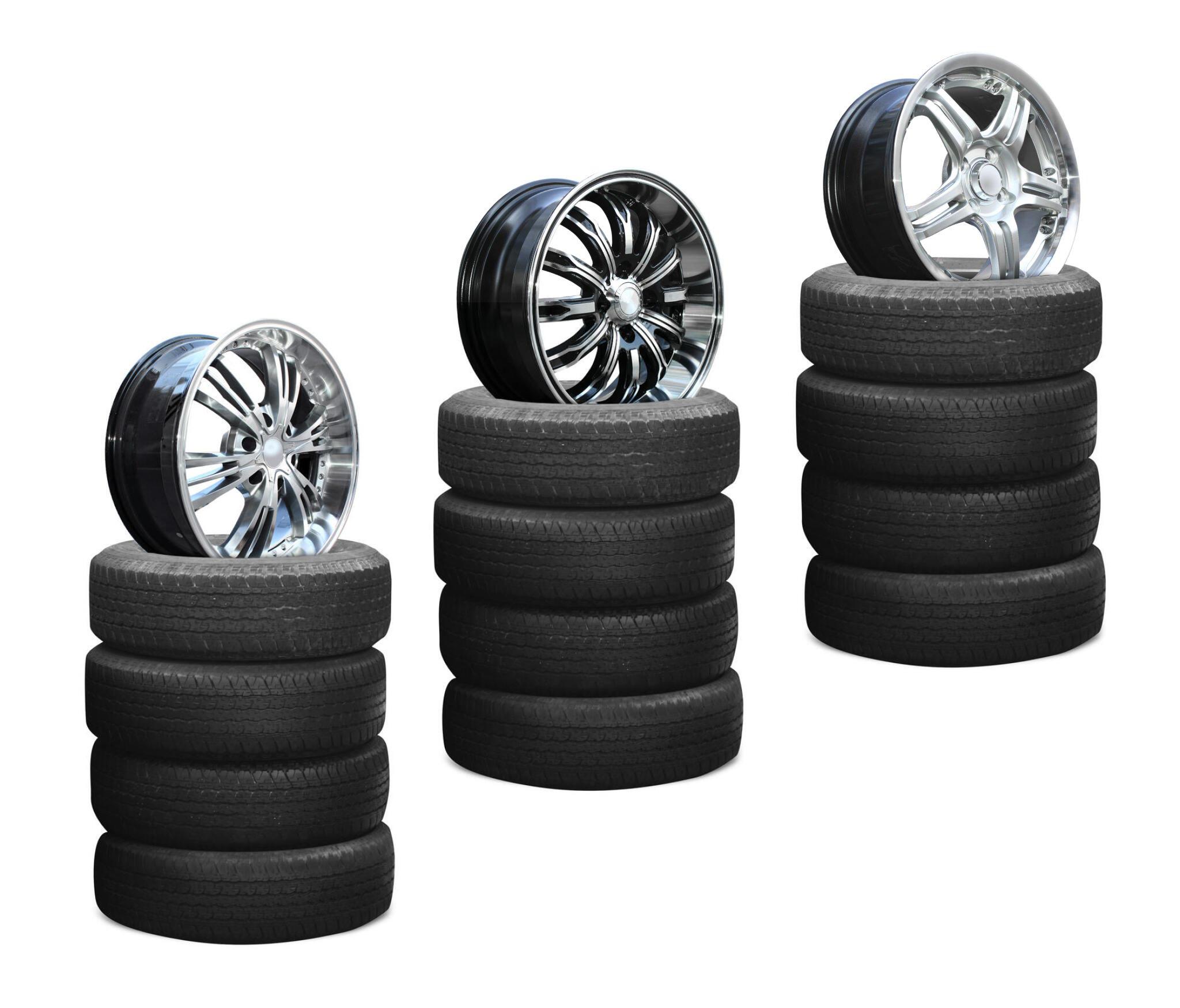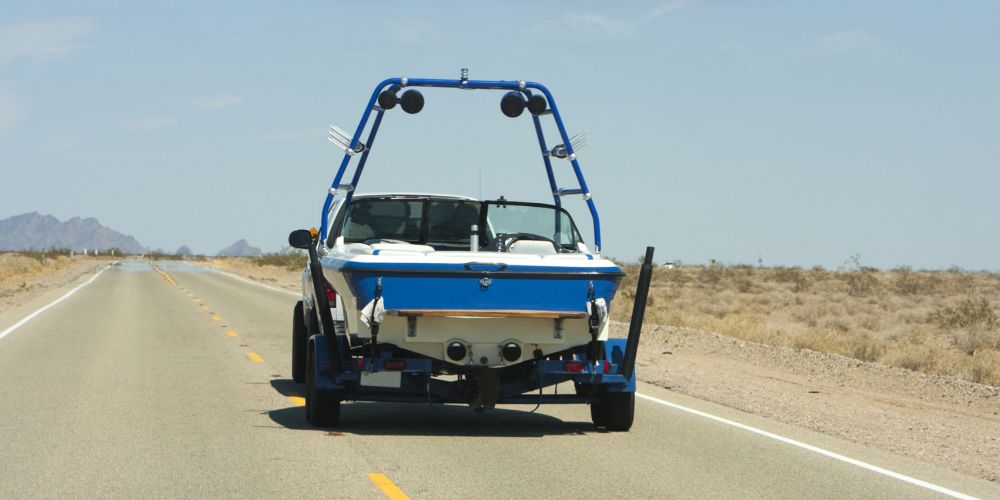Last Updated on April 21, 2024
What are Snow Tires?
Snow tires, known as winter tires, are specialized tire variants designed to provide superior traction and handling on cold, snowy, and icy roads. These tires are engineered with specific features that make them exceptionally well-suited for winter conditions. They have a unique tread pattern, deeper grooves, and a special rubber compound that remains flexible in cold temperatures. These design elements collectively enhance their performance in adverse winter weather.
Why Are Snow Tires Important?
Snow tires ensure safety and control while driving in winter conditions. Here’s why they are essential:
- Enhanced Traction: Snow tires offer significantly better traction on snow and ice-covered roads than all-season tires. This improved grip reduces the risk of accidents and enhances overall safety during winter driving.
- Shorter Stopping Distances: Their advanced tread design and cold-resistant rubber allow for shorter braking distances, crucial on slippery roads.
- Improved Handling: Snow tires provide better control and handling, reducing the likelihood of skidding or losing vehicle control in treacherous conditions.
- Cold Temperature Performance: Unlike all-season tires, snow tires remain effective in frigid temperatures, ensuring consistent performance throughout the winter season.
- Insurance and Legal Requirements: In some regions, using snow tires during the winter months is legally mandated. Additionally, many insurance companies offer discounts to policyholders who equip their vehicles with snow tires due to their safety benefits.
When Should You Use Snow Tires?
Snow tires should be used under the following circumstances:
- Winter Weather Conditions: Snow tires are most effective when temperatures drop below 45°F (7°C), especially when roads are covered with snow, ice, or slush. They are designed to excel in these adverse conditions.
- Seasonal Changeover: It’s common practice in regions with harsh winters to switch to snow tires in late fall and revert to regular tires in spring when the weather improves. This ensures optimal performance during the winter months.
- Frequent Snowbelt or Mountain Driving: If you reside in an area prone to heavy snowfall or mountainous terrain, snow tires are highly recommended to navigate challenging road conditions safely.
- Travel to Snow-Prone Areas: If you plan to drive to regions known for snowy or icy conditions, equipping your vehicle with snow tires is essential to ensure a safe journey.
Snow tires are critical to safe winter driving due to their superior traction, handling, and safety features. Understanding when and why to use snow tires empowers drivers to make informed decisions and prioritize safety during the winter season.

Types of Snow Tires
Not all snow tires are created equal when navigating the treacherous conditions of winter roads. Snow tires cater to different needs and preferences, each offering distinct advantages. In this article, we’ll explore the main types of snow tires and their characteristics, helping you make an informed choice for safe winter driving.
1. Studless Snow Tires
Studless snow tires, also known as winter or snow performance tires, are designed for those who prioritize enhanced traction without using metal studs. These tires are best for snow and beneficial for areas with strict regulations on studded tire usage due to their potential to damage road surfaces.
- Tread Design: Studless snow tires feature a complex tread pattern with multiple sipes (tiny channels) to grip snow and ice effectively.
- Rubber Compound: They use a specialized rubber compound that remains pliable even in frigid temperatures, ensuring flexibility and grip.
- Performance: These tires excel in icy and snowy conditions, providing stable handling and short braking distances.
2. Studded Snow Tires
These snow tires are ideal for regions with severe and prolonged winter conditions, offering unparalleled traction on ice. These tires incorporate metal studs or pins in the tread, which bite into icy surfaces, delivering exceptional grip.
- Metal Studs: These snow tires feature metal studs embedded in the tread, creating extra grip on icy roads.
- Noise and Road Damage: While they provide excellent traction on ice, studded tires can be noisy and may cause damage to road surfaces.
- Regulations: It’s important to note that some regions have restrictions on using studded tires due to the potential harm they can cause to roadways.
3. Performance Winter Tires
Performance winter tires are designed for drivers of high-performance or sports cars who still want excellent winter traction without sacrificing handling and speed capabilities. These tires strike a balance between winter performance and sports car agility.
- Tread Design: Performance winter tires have a unique tread pattern that optimizes dry and wet road performance, making them suitable for sports cars.
- Handling: They provide excellent handling and steering response, even in winter conditions, making them a favorite among sports car enthusiasts.
- Trade-offs: While they offer better winter performance than all-season tires, they may not be as effective as dedicated studless or studded tires in extreme ice and snow.
4. All-Season Tires vs. Snow Tires
All-season tires are famous for year-round driving convenience but may not provide sufficient traction in severe winter conditions. Snow tires, on the other hand, are purpose-built for winter performance.
- Tread Compound: All-season tires have a rubber compound that hardens in cold temperatures, reducing their winter performance.
- Winter Capability: Snow tires outperform all-season tires in winter conditions, providing better traction, handling, and safety.
- Seasonal Changeover: For optimal safety in winter, it’s recommended to switch to snow tires during the cold season and revert to all-season tires in milder weather.
Choosing the right type of snow tire is crucial for safe winter driving. Whether you prioritize grip on ice, performance, or versatility, understanding the various types of snow tires and their characteristics empowers you to make an informed decision that aligns with your specific needs and driving conditions.

Choosing the Right Snow Tires
Selecting the appropriate snow tires for your vehicle is a critical decision that directly impacts your safety and performance on winter roads. It involves considering several factors to ensure the tires match your needs and driving conditions. In this article, we’ll delve into the key aspects to consider when choosing snow tires, drawing insights from reputable sources to guide your decision.
1. Tire Size and Compatibility
Ensuring you select the correct tire size and type compatible with your vehicle is the first step in choosing the right snow tires.
- Vehicle Specifications: Check your vehicle’s owner’s manual or the tire placard on the driver’s door jamb for the recommended tire size and type.
- Aspect Ratio and Width: Pay attention to the aspect ratio (profile) and width of the tires, as they impact handling and comfort.
- Load Index and Speed Rating: Confirm that the snow tires meet or exceed your vehicle’s load index and speed rating requirements.
2. Tread Patterns and Designs
Tread patterns are crucial in determining a snow tire’s performance in various winter conditions.
- Sipe Density: Look for tires with a higher density of sipes (small channels) in the tread, as this improves traction on snow and ice.
- Directional vs. Symmetrical Treads: Consider whether a directional or symmetrical tread design suits your needs. Directional treads are effective in deep snow, while symmetrical imprints provide versatility.
- Studless vs. Studded: Decide between studless and studded tires based on the winter conditions you frequently encounter. Studless tires excel in snow and ice, while studded tires provide extra grip on ice.
3. Rubber Compound and Traction
The rubber compound used in snow tires directly affects their performance in cold temperatures.
- Cold-Weather Rubber: Opt for snow tires with a rubber compound engineered for cold weather, as they remain flexible and maintain traction even in frigid conditions.
- Traction Enhancements: Some snow tires feature advanced technologies like micro-pores and additives that enhance grip on slippery surfaces.
4. Load Rating and Speed Rating
Ensuring your snow tires have the appropriate load and speed ratings is essential for safety and performance.
- Load Rating: Choose snow tires with a load rating suitable for your vehicle and its intended use (e.g., passenger or light truck).
- Speed Rating: Match the speed rating of the snow tires with your typical driving speeds to ensure they can handle the demands of your driving habits.
5. Installing Snow Tires
Installing snow tires correctly is essential for their effectiveness and longevity.
- DIY vs. Professional Installation: Decide whether you’ll install the snow tires or have them professionally mounted and balanced.
- Mounting and Balancing: Ensure the snow tires are mounted and balanced correctly to prevent vibrations and uneven wear.
- Seasonal Tire Swapping: Plan for the seasonal changeover between snow and regular tires, typically done in the fall and spring.
Choosing the right snow tires is a critical aspect of winter driving safety. By considering factors such as tire size, tread patterns, rubber compound, load rating, and installation, you can make an informed decision that ensures your vehicle performs optimally in cold and slippery conditions. Always consult your vehicle’s manual and seek guidance from tire experts to provide the best fit for your specific needs.

Installing Snow Tires
Installing snow tires is crucial in preparing your vehicle for winter driving conditions. Proper installation ensures that your snow tires function effectively, providing the traction and safety to navigate snowy, icy, and cold roads. In this article, we’ll explore the key considerations and steps involved in installing snow tires, drawing insights from reputable sources to guide you through the process.
1. DIY vs. Professional Installation
Before diving into the installation process, deciding whether to install the snow tires yourself or opt for professional installation services is essential.
- DIY Installation: Installing snow tires yourself can save money but requires some technical know-how, proper tools, and a safe environment. Make sure you’re comfortable with the process and have the necessary equipment.
- Professional Installation: Many drivers have their snow tires professionally installed by trained technicians. This option ensures proper installation and minimizes the risk of errors.
2. Mounting and Balancing
Mounting and balancing are critical steps in the installation process to ensure even tire wear and a smooth, vibration-free ride.
- Mounting: When mounting snow tires, it’s essential to ensure they align correctly with the vehicle’s wheels. This prevents uneven wear and provides optimal traction.
- Balancing: Balancing involves equalizing the weight distribution of the tires and wheels. Properly balanced snow tires reduce vibrations and improve overall handling.
- Alignment Check: Check your vehicle’s wheel alignment during installation to ensure all wheels are correctly aligned. This enhances tire longevity and performance.
3. Seasonal Tire Swapping
Seasonal tire swapping is common in regions with distinct winter and summer conditions. It involves replacing regular tires with snow tires when winter approaches and switching back to stock tires in milder weather.
- Timing: Plan the seasonal changeover between snow and regular tires based on local weather patterns. Typically, this occurs in the fall as winter approaches and in the spring when the weather improves.
- Storage: Properly store your unused tires to prevent damage and ensure they remain in good condition for the next season. Tire storage bags or racks can help protect your tires.
- Professional Assistance: Some tire shops offer seasonal tire swapping services, making it convenient for those who prefer not to do it themselves.
Installing snow tires is a critical aspect of winter driving preparation. Whether you install them yourself or opt for professional services, it’s essential to ensure that the tires are mounted, balanced, and aligned correctly. Additionally, consider the timing of the seasonal tire changeover to maximize the safety and effectiveness of your snow tires during the winter months. Always follow best practices and consult experts when in doubt to guarantee a safe and reliable winter driving experience.
Maintaining Snow Tires
Maintaining your snow tires is crucial for their performance, longevity, and safety during winter driving. Proper care ensures that these specialized tires continue to provide the traction and control you need in cold, snowy, and icy conditions. This article will delve into the critical aspects of maintaining snow tires, drawing insights from reputable sources to help keep your winter tires in top condition.
1. Proper Inflation and Pressure
Maintaining the correct tire pressure is one of the most critical aspects of snow tire maintenance.
- Regular Monitoring: Regularly check your snow tire’s air pressure, significantly when temperatures fluctuate. Cold weather can cause tire pressure to drop.
- Recommended Pressure: Refer to your vehicle’s owner’s manual or the tire manufacturer’s recommendations for the appropriate tire pressure. It’s essential to keep the tires inflated adequately for optimal performance.
- Under-Inflation Risks: Under-inflated snow tires can lead to reduced traction, decreased fuel efficiency, and uneven wear.
2. Rotating Snow Tires
Rotating snow tires helps ensure even wear and prolongs their lifespan.
- Rotation Patterns: Follow the recommended rotation pattern provided by the tire manufacturer. Generally, it’s advisable to rotate snow tires every 6,000 to 8,000 miles to ensure even wear on all four tires.
- Balancing: When rotating snow tires, balance them to maintain a smooth and vibration-free ride.

3. Storing Snow Tires in the Off-Season
Storing snow tires during the off-season is crucial to prevent damage and maintain performance.
- Cleaning: Before storing snow tires, clean them thoroughly to remove dirt, salt, and other contaminants. This helps prevent corrosion and deterioration.
- Storage Location: Store snow tires in a cool, dry place away from direct sunlight and temperature extremes. Tires should be kept away from sources of ozone, such as electric motors.
- Tire Covers: Consider using tire covers or bags to protect the tires from moisture and dust during storage.
4. Inspecting for Wear and Damage
Regular inspections help you identify signs of wear or damage to your snow tires.
- Tread Depth: Measure the tread depth periodically using a tread depth gauge. Snow tires should have adequate tread depth for effective winter performance. Replace them if the tread wears down to 6/32 inches or less.
- Cuts and Punctures: Inspect the tire’s sidewalls and tread for cuts, punctures, or visible damage. Any damage should be addressed promptly.
- Age: Even if they have sufficient tread depth, consider replacing snow tires over six years old, as the rubber may deteriorate over time.
Proper maintenance of snow tires is essential to ensure they perform effectively and provide the safety and control needed in winter driving conditions. Regularly checking and maintaining tire pressure, rotating the tires, storing them correctly during the off-season, and inspecting for wear and damage are all crucial steps to maximize the lifespan and performance of your snow tires. Following these guidelines will help you navigate winter roads with confidence and safety.
Driving Safely with Snow Tires
Snow tires are essential for safe winter driving, but proper handling and driving techniques are equally vital to ensure your safety on snowy, icy, and cold roads. This article will explore key strategies and tips for driving safely with snow tires, drawing insights from reputable sources to help you confidently navigate winter conditions.
1. Braking and Accelerating Techniques
Snow tires enhance traction, but your driving habits significantly maintain control on winter roads.
- Smooth Movements: Gradually apply the brakes and accelerator to prevent skidding. Sudden movements can lead to loss of control.
- Antilock Braking System (ABS): If your vehicle is equipped with ABS, understand how it works. ABS helps prevent wheel lock-up during braking, allowing you to steer while braking.
- Increase Following Distance: Leave a more significant following distance behind the vehicle in front of you to provide ample time for braking.
2. Handling Snowy and Icy Roads
Snow tires improve handling, but adapting your driving style to challenging conditions is essential.
- Reduce Speed: Drive at reduced speeds, especially on icy and snow-covered roads. Slow down before curves and turns.
- Avoid Sudden Maneuvers: Make gentle turns and avoid abrupt steering or lane changes. Sudden movements can cause skidding.
- Use Low Gears: If your vehicle has a manual transmission or allows manual shifting, use lower gears to control speed and prevent wheel spin.
3. Tips for Winter Driving
In addition to tire-related precautions, consider these tips to enhance your safety during winter driving.
- Clear Snow and Ice: Ensure your vehicle is completely clear of snow and ice before setting out. This includes clearing windows, mirrors, lights, and the roof.
- Maintain Visibility: Use headlights, even during the day, to improve visibility. Keep headlights and taillights clean.
- Keep a Winter Emergency Kit: Carry a winter emergency kit in your vehicle, including a flashlight, blankets, non-perishable food, and a shovel.
- Check Weather Reports: Stay informed about weather conditions and road closures before embarking on a trip.
- Practice Safe Braking: If you must stop on a slippery incline, gently apply the brakes. Avoid accelerating when heading uphill.
- Watch for Black Ice: Be especially cautious when temperatures are near freezing, as black ice can form, making roads extremely slippery.
In summary, driving safely with the best tires for snow requires a combination of tire-related precautions and driving techniques tailored to winter conditions. By practising smooth braking and acceleration, adapting to snowy and icy roads, and following general winter driving tips, you can enhance your safety and the safety of those on the road. Remember that snow tires provide added traction but are not a substitute for careful driving in winter weather.
Legal Requirements and Regulations
Navigating the maze of legal requirements and regulations concerning snow tires is essential for drivers who want to stay on the right side of the law while ensuring their safety in winter conditions. In this article, we’ll explore the legal aspects of snow tires, drawing insights from reliable sources to help you understand the rules and regulations that may apply in your region.
1. Snow Tire Laws by Region
Snow tire regulations vary significantly depending on where you live or plan to drive during winter.
- State and Provincial Laws: Many states and provinces have specific laws regarding using snow tires during winter. These laws may stipulate when snow tires must be used and the consequences for non-compliance.
- Local Ordinances: Some local jurisdictions may have snow tire requirements or restrictions in addition to state or provincial laws.
2. Winter Tire Standards
Various regions have established standards and designations for winter tires to ensure safety and performance.
- Winter Tire Symbols: Look for the “Three-Peak Mountain Snowflake” symbol on the sidewall of winter tires. This symbol indicates that the tire meets specific winter performance standards.
- M+S Rating: Some regions use the “M+S” (Mud and Snow) rating to designate tires suitable for winter use. However, this rating may not be as stringent as the Three-Peak Mountain Snowflake symbol.
3. Penalties for Non-Compliance
Failure to comply with snow tire laws or regulations can result in penalties, fines, or other consequences.
- Fines: Violating snow tire laws can lead to fines or citations, which can vary depending on the severity of the violation and the jurisdiction.
- Insurance Implications: Some insurance companies may deny claims if you’re involved in an accident during the winter, and you’re not using appropriate snow tires as required by law.
- Safety Risks: Beyond legal and financial repercussions, driving without appropriate snow tires poses safety risks for you and other road users.
In conclusion, understanding the legal requirements and regulations about snow tires in your region is crucial for safe and compliant winter driving. Be sure to research and adhere to local laws and standards regarding snow tires, and always prioritize safety when navigating winter road conditions. Compliance keeps you on the right side of the law and ensures that you and your fellow road users stay safe during winter.

Comparing Snow Tire Brands
When selecting the right snow tires, the brand choice can significantly affect performance, durability, and overall satisfaction. In this article, we’ll compare various snow tire brands, drawing insights from reputable sources to help you decide based on your specific needs and preferences.
1. Top Snow Tire Manufacturers
Several tire manufacturers are renowned for producing high-quality snow tires, each with strengths and characteristics.
- Bridgestone: Bridgestone offers a wide range of snow tires known for their excellent traction on snow and ice, including the Blizzak series.
- Michelin: Michelin snow tires, such as the X-Ice and Pilot Alpin lines, are praised for their winter performance and durability.
- Continental: Continental produces popular snow tire models like the WinterContact and VikingContact, known for their grip and handling in winter conditions.
- Nokian: Nokian snow tires, including the Hakkapeliitta series, are highly regarded for their performance in extreme winter weather.
2. Customer Reviews and Ratings
Reading customer reviews and ratings can provide valuable insights into the real-world performance of different snow tire brands.
- Online Reviews: Websites and forums like Tire Rack, Consumer Reports, and Amazon often feature user reviews and ratings for various snow tire brands and models.
- Customer Satisfaction: Pay attention to feedback regarding traction, handling, wear, and overall satisfaction.
- Consider Personal Preferences: Remember that individual preferences and driving conditions can influence reviews, so look for patterns and shared experiences.
3. Price vs. Performance
Comparing the price and performance of snow tires from different brands can help you find the best value for your specific needs.
- Budget-Friendly Options: Some brands offer budget-friendly snow tires that provide adequate winter performance without breaking the bank.
- Premium Performance: Premium brands often have a higher price tag but may offer advanced technologies and superior performance in extreme winter conditions.
- Mid-Range Options: Consider mid-range options that balance performance and cost-effectiveness.
4. Tire Models and Availability
Different brands may have specific tire models for various winter conditions and vehicle types.
- Tire Models: Look for tire models within a brand that cater to your specific needs, whether you drive a passenger car, SUV, or truck.
- Availability: Ensure that the snow tires you’re interested in are readily available in your region and through local tire retailers.
- Consider Tire Size: Confirm that your chosen brand offers the appropriate tire size for your vehicle.
Comparing snow tire brands involves considering factors such as the reputation of the manufacturer, customer reviews, price-performance ratios, and the availability of suitable tire models. It’s essential to prioritize your specific driving needs, whether you require exceptional traction in extreme winter conditions or seek a more budget-friendly option that still provides safe winter performance. Research and careful consideration will help you choose the snow tire brand that best meets your requirements for the upcoming winter season.
Winter Tire Accessories
While snow tires are pivotal in ensuring safe winter driving, the right winter tire accessories can further enhance your safety and preparedness on snowy, icy, and cold roads. This article will explore essential winter tire accessories, drawing insights from reputable sources to help you confidently navigate winter conditions.
1. Tire Chains and Cable
Tire chains and cables are essential for improving traction on icy and snow-covered roads.
- Tire Chains: These metal chains attach to your vehicle’s tires, providing extra grip on slippery surfaces. They are ideal for extreme winter conditions.
- Tire Cable: Tire cables are lighter alternatives to chains. They consist of steel cables with metal or composite rollers for added traction.
- Usage Guidelines: Follow the manufacturer’s instructions for proper installation and usage. Chains and cables should only be used on specific types of tires and at low speeds.
2. Tire Pressure Monitoring Systems (TPMS)
TPMS is a valuable tool for monitoring tire pressure, especially in winter conditions where pressure fluctuations are common.
- Function: TPMS sensors monitor tire pressure and provide real-time feedback to the driver, alerting them to underinflated tires.
- Benefits: Proper tire pressure improves traction and handling in winter conditions and helps prevent tire damage and blowouts.
- Installation: Some snow tires come with built-in TPMS sensors, while others may require installing aftermarket sensors.
3. Snow Socks and Traction Aids
Snow socks and traction aids provide temporary traction solutions in emergencies or when additional grip is needed.
- Snow socks are fabric covers that slip over your vehicle’s tires to increase traction on snow and ice. They are easy to install and remove.
- Traction Aids: Traction aids are mats or devices placed under your tires for traction in slippery conditions.
- Usage Considerations: Snow socks and traction aids are temporary solutions and should only be used when necessary. Follow the manufacturer’s instructions for proper deployment.
4. Tire Storage Solutions
Proper tire storage accessories help protect your snow tires during the off-season and ensure they remain in good condition for the following winter.
- Tire Bags: Tire storage bags protect your tires from dust, moisture, and damage during storage.
- Tire Racks: Tire racks or storage racks provide a space-saving and organized way to store unused spare tires.
- Storage Conditions: Store your snow tires in a cool, dry place away from direct sunlight, extreme temperatures, and sources of ozone.
Winter tire accessories are valuable additions to your winter driving toolkit. Tire chains, cables, TPMS, snow socks, traction aids, and tire storage solutions can enhance safety, traction, and tire longevity during winter. When used correctly and by manufacturer guidelines, these accessories contribute to safer and more confident winter driving.
Recommendations
Snow tires are a crucial component of safe and reliable winter driving. As we conclude this comprehensive guide to snow tires, it’s essential to recap the key takeaways and offer recommendations for choosing, maintaining, and using snow tires effectively.
1. The Importance of Snow Tires
- Snow tires are purpose-built for winter conditions, offering superior traction, handling, and safety compared to all-season tires.
- Their unique tread patterns, rubber compounds, and design features make them essential for driving in cold, snowy, and icy conditions.
2. Choosing the Right Snow Tires
- Select snow tires that match your vehicle’s specifications and the local winter weather conditions you’ll encounter.
- Pay attention to factors such as tread patterns, rubber compounds, load and speed ratings, and the type of snow tires that best suit your needs (studless, studded, performance, etc.).
3. Maintaining Snow Tires
- Proper maintenance ensures that your snow tires perform optimally throughout the winter season.
- Regularly check and maintain tire pressure, rotate your tires to ensure even wear, and store them correctly during the off-season.
4. Legal Requirements and Regulations
- Be aware of your region’s snow tire laws and regulations, including any requirements for winter tires, tire symbols, or specific designations like the “Three-Peak Mountain Snowflake.”
- Comply with local laws to avoid penalties and ensure your safety.
5. Comparing Snow Tire Brands
- Research and consider reputable snow tire brands known for their quality and winter performance.
- Read customer reviews and ratings to gain insights into real-world experiences with specific tire models.
- Evaluate the balance between price and performance, considering your budget and driving needs.
6. Winter Tire Accessories
- Accessories like tire chains, cables, TPMS, snow socks, traction aids, and tire storage solutions can enhance safety and preparedness for winter driving.
- Select and use these accessories according to manufacturer guidelines and as needed for specific winter conditions.
Conclusion
Snow tires are indispensable for winter driving safety, providing the traction and control needed to navigate challenging winter conditions. You can enjoy safer and more confident winter driving by choosing the right snow tires, maintaining them properly, complying with legal requirements, comparing brands, and considering essential accessories. Remember that winter safety starts with preparation and making informed decisions, and snow tires are a critical part of that preparation.
FAQs
Is it worth getting snow tires?
It’s worth getting snow tires if you live in an area with cold winters and frequent snowfall. Snow tires provide significantly better traction and handling on snow and ice than all-season tires, enhancing safety and control in winter conditions.
Can you drive snow tires all year?
It’s not recommended to drive snow tires all year. Snow tires are designed with a softer rubber compound that can wear out quickly in warmer weather. Using them year-round can reduce their lifespan and effectiveness, as they excel in cold temperatures but perform poorly in hot conditions.
How much do four snow tires cost?
The cost of four snow tires can vary widely depending on the brand, size, and type of tires you choose. On average, you can expect to pay anywhere from $400 to $800 or more for four snow tires. Premium brands and larger sizes tend to be on the higher end of the price range.
Do snow tires make a difference on a car?
Snow tires significantly affect a car’s performance and safety during winter. They offer superior traction and grip on snow and ice, reducing the risk of accidents and providing better control when driving in cold and slippery conditions.
How much are snow tires?
The cost of snow tires varies depending on factors like brand, size, and type. Essential snow tires can start at around $50 to $100 each, while premium models can range from $150 to $200 or more per tire. It’s essential to consider your specific driving needs and budget when choosing snow tires.
When should I switch to snow tires?
It’s advisable to switch to snow tires when temperatures consistently drop below 45°F (7°C) and winter conditions, such as snow and ice, become a regular occurrence. Ideally, you should install snow tires in the fall, well before the harshest winter weather arrives, to ensure you’re prepared for safe winter driving.










